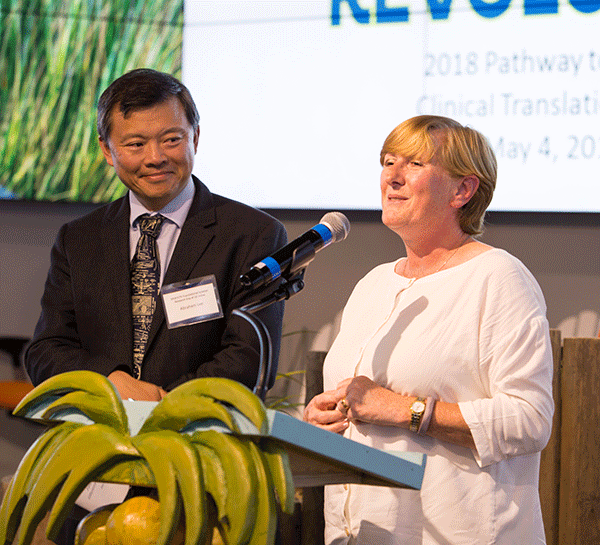University-Industry Collaboration Honored
 May 21, 2018 - UC Irvine’s Institute for Clinical and Translational Science recently honored biomedical engineering professor and department chair Abe Lee, along with his longtime industry partner Fiona Adair from Beckman Coulter, for their exemplary commitment to collaborative research.
May 21, 2018 - UC Irvine’s Institute for Clinical and Translational Science recently honored biomedical engineering professor and department chair Abe Lee, along with his longtime industry partner Fiona Adair from Beckman Coulter, for their exemplary commitment to collaborative research.
The two received the 2018 Industry-University Partnership Award for their years-long joint effort to develop innovative and affordable microscale technologies.
Lee, the William J. Link Professor and Chair of Biomedical Engineering, and Adair, vice president of strategy and innovation at Beckman Coulter Diagnostics, were honored May 4 at the 10th annual ICTS “People Who Make a Difference in Human Health” awards dinner, held at UCI Applied Innovation.
Lee also has a courtesy appointment in UCI’s mechanical and aerospace engineering department. His research focuses on developing microfluidic platforms for point-of-care and molecular diagnostics, sample preparation and liquid biopsies, cell-like vesicles for theranostics, single-cell processing and analysis, and vascularized organ-on-a-chip devices.
The collaboration with Beckman Coulter began in 2006, when Lee began directing an NSF-sponsored public-private consortium called the Center for Advanced Design and Manufacturing of Integrated Microfluidics (CADMIM), headquartered at UCI. The Industry-University Cooperative Research Center seeks to develop simpler, faster, and less expensive microscale tools and technologies to address problems in human health, agriculture and the environment. Beckman Coulter was an early industry partner.
Despite their sometimes conflicting goals and aspirations, the two very different entities have worked side by side since then, creating a durable partnership. “We had established personal relationships, and both sides wanted and visualized the value of working together,” Lee said. “We enjoy this relationship very much, and it has resulted in a broader UCI-BEC partnership. We continue to push the forefront of microfluidics for clinical diagnostics, and we hope to change the field in the next five years.”
- Anna Lynn Spitzer
